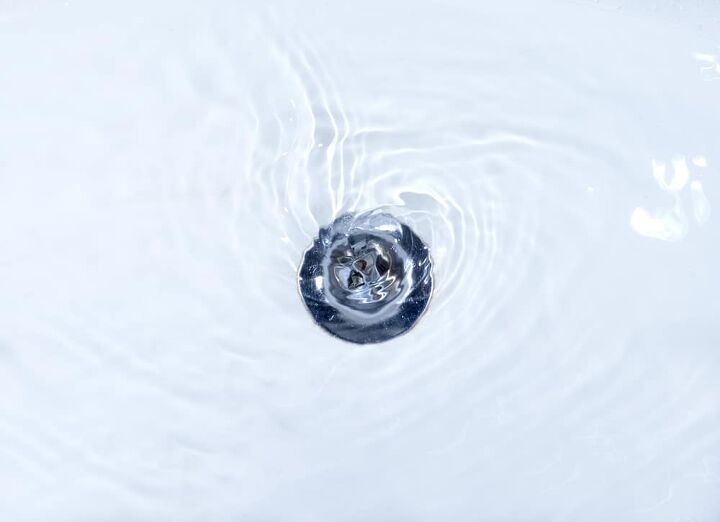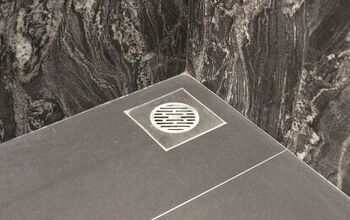How To Unclog A Shower Drain With Bleach (Do This!)

Shower drains boast a remarkable talent for getting clogged up, especially at moments where you don’t possess the tools to unclog them by traditional means. However, there might be a way to make things easier. As luck would have it, there’s a simple way to unclog your shower drain with the use of household bleach.
To unclog a shower drain with bleach, pour some undiluted bleach into your shower drain and let it sit for about 15 minutes. When it is done sitting, flush the drain with hot water. Do not let your bleach sit longer than 15 minutes as it might corrode the pipes.
Like with any major home trick, there’s a right way and a wrong way to make this work. If you want to go clog-free without busting your pipes, keep reading. We got the scoop.
Do You Need to Hire a Plumber?
Get free, zero-commitment quotes from pro contractors near you.

How Does Bleach Unclog Your Shower Drain?
Unlike a drain snake or a clean plunger, bleach does not pull out the gunk that is clogging up your drain. Rather, it uses its corrosive nature to eat away at the clog and dissolve it. Once the clog is dissolved enough to be loosened up, you can use hot water to flush away the rest of it. It’s just that simple.
What Kind Of Bleach Can You Use To Unclog A Shower Drain?
The best bleach to use is standard Clorox bleach, the same type you can use to add to a pool or do your laundry. If you have bleach stains on a carpet, chances are that they were caused by the same type of bleach that you need to use on the drain. Do not dilute the bleach or get that weird scented bathroom cleaner bleach, as this will make it less effective at clearing clogs.
How Effective Is This Method?
I’ll be honest. Not all clogs in your shower will be able to be fixed through the use of bleach. If you have a lot of grease, hair, or material in your shower’s plumbing, it may not work. However, bleach can loosen up fair amounts of organic material and even help kill drain fly infestations. It’s worth a shot, really.
The Step By Step Guide On Getting Rid Of Clogs Using Bleach
The overall process is fairly easy to do and straightforward. Though it’s pretty easy to do, it’s still good to know what you should and shouldn’t do when you try this method. Here is the step by step:
- Wait until your shower drain is dry and grab some bleach. You don’t want to do this immediately after you had a shower, since the water can dilute the bleach.
- Measure out one cup of bleach, and pour it down the drain. Do not dilute the bleach. If you want to add slightly more, you can, but you usually need at least a cup for this to work. When pouring the bleach down the drain, try to make sure that your bleach coats all sides of the drain.
- Wait for a maximum of 15 to 20 minutes for most standard drain clogs. If you have a massive hair clog, you can leave the bleach there for an hour in order to dissolve the hair. Any longer will cause corrosion in most drain pipes, which can end up causing far more problems than a simple clog. If you want to stay on the safe side, wait for 10 to 15 minutes at most.
- Turn on the shower faucet and put the water on hot. Let the water run down the drain. The hot water will dilute the bleach, neutralizing it while unclogging your drain.
How Can You Tell If This Method Worked?
You can tell if the clog is gone by watching the drain. If the water starts going down the drain at a faster rate, then your clog has gone. If the water is still stuck where it once was, then you still have a clog.
Is Using Bleach To Unclog Drains Safe For Your Plumbing?
This is a great question, and honestly, it usually is alright. When it comes to bleach, the length of time it spends in your plumbing matters far more than the fact that you’re using it. If you’re worried about your drains being corroded or have older drain pipes, it may be better to skip this method altogether.
Even healthy, new drains have their limits. If you leave it on for too long, bleach can cause even the newest of drain pipes to corrode. So, when you’re using this method, keep in mind the amount of time you leave the bleach down there. Moderation is key.
Help! Using Bleach Didn’t Unclog My Drain!
Bleach is a great drain loosener, but it doesn’t always work. When it fails to do the job, you should not try to use bleach again. It probably won’t help and it could actually contribute to corrosion. So, put down the bleach. It may be time to try another way to unclog that drain. Some of the better options include:
- Using A Snake. Drain snakes are the fastest and most reliable way to get rid of a clog without harming the plumbing. They’re worth the investment.
- Using A Commercial Drain Cleaner. Something along the lines of Liquid Plumber can work wonders, all while giving you less of a chance of having corroded pipes.
- Using A Clean Plunger. The emphasis here is on it being clean, as a dirty one is just plain foul. Like with toilets, plungers work to reduce clogs by using vacuum suction to shift the clog around and pull it upwards. This is a good way to pull out whatever’s causing the clog to happen if you don’t have a snake on hand.
- Using Baking Soda And Vinegar. Don’t ask why, but this method is a great one for cleaning out plumbing and it works wonders, often at times that bleach doesn’t. To do this, pour a generous amount of baking soda down the drain, then follow it with 1/4 cup of bleach. You’ll hear some fizzing, and then see the clog vanish.
When Should You Call A Plumber?
Whether or not you need to call a plumber usually depends on whether or not you’ve been able to remove the clog on your own. If you can’t unclog the shower drain on your own, you won’t be able to use your shower until you call a plumber. You need to unclog that drain in order for your shower to be safe and sanitary to use!
With that said, there are other moments where calling a plumber makes sense. If you notice signs of a leak, start seeing water rushing up through the drain into your bathtub, or have a drain fly infestation that won’t go away, you most likely have an underlying problem that needs to be professionally addressed.
How Much Does It Cost To Unclog A Drain?
If you DIY it, you might be able to do it for free if you have the supplies on hand. For example, you probably have white vinegar and baking soda lying around somewhere. Getting a professional to do it for you, on the other hand, can cost more than you might expect.
Though the prices vary depending on the type of clog, a typical unclogging session can run several hundred dollars. More specifically, you should expect to pay between $109 to $213 for a professional plumber to remove a drain clog. If you opt for a handyman, you might be able to get a lower price.
Do You Need to Hire a Plumber?
Get free, zero-commitment quotes from pro contractors near you.

Related Questions
Can using a snake worsen drain problems?
Most of the time, drain snaking will help your clogs. However, it does have the potential to do more damage if the wrong circumstances arise. If you have older drain pipes that suffer from corrosion, snaking a drain can actually damage the piping and scrape off the metal. This can lead to burst pipes, leaking, and worse.
What should you do if snaking your drain doesn’t work?
It’s safe to assume that snaking a drain will fix most clog problems. It is considered to be the gold standard of DIY drain fixes in most situations, especially if your drains are relatively new. If snaking the drain doesn’t work, this usually denotes that you have a clog in your P-trap.This means you may need to take apart your plumbing or approach it from another angle to get rid of the clog. For most people, a P-trap clog or similar tends to require a call to the plumber.
Why do plumbers warn against using Drano?
Drano is one of the most caustic drain cleaners on the market, and it’s often used incorrectly. It is corrosive to the point that misuse can easily cause problems when it comes to rusted pipes. If you have PVC pipes, Drano can also melt the glue that holds them together. This leads to massive leaks or even pipe collapse.Unless you have “healthy” pipes and are willing to follow instructions to the letter, Drano is best not used. If at all possible, try to find another alternative to Drano before you spring for it. Even Coca-Cola can break apart clogs without causing the amount of damage that poorly used Drano can do.

Ossiana Tepfenhart is an expert writer, focusing on interior design and general home tips. Writing is her life, and it's what she does best. Her interests include art and real estate investments.
More by Ossiana Tepfenhart














![10 Best Electric Lawn Mowers - [2022 Reviews & Top Rated Models]](https://cdn-fastly.upgradedhome.com/media/2023/07/31/9070486/10-best-electric-lawn-mowers-2022-reviews-top-rated-models.jpg?size=350x220)












